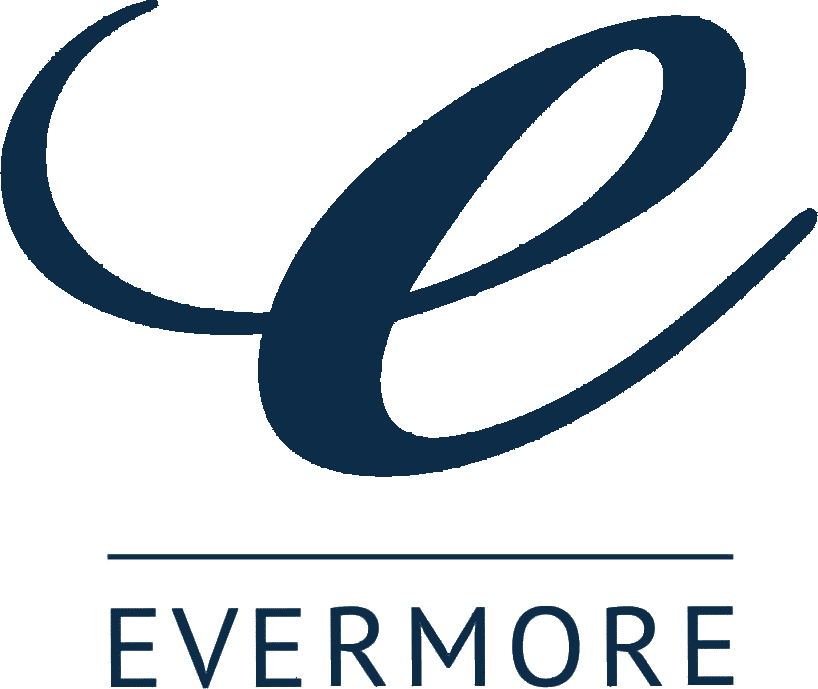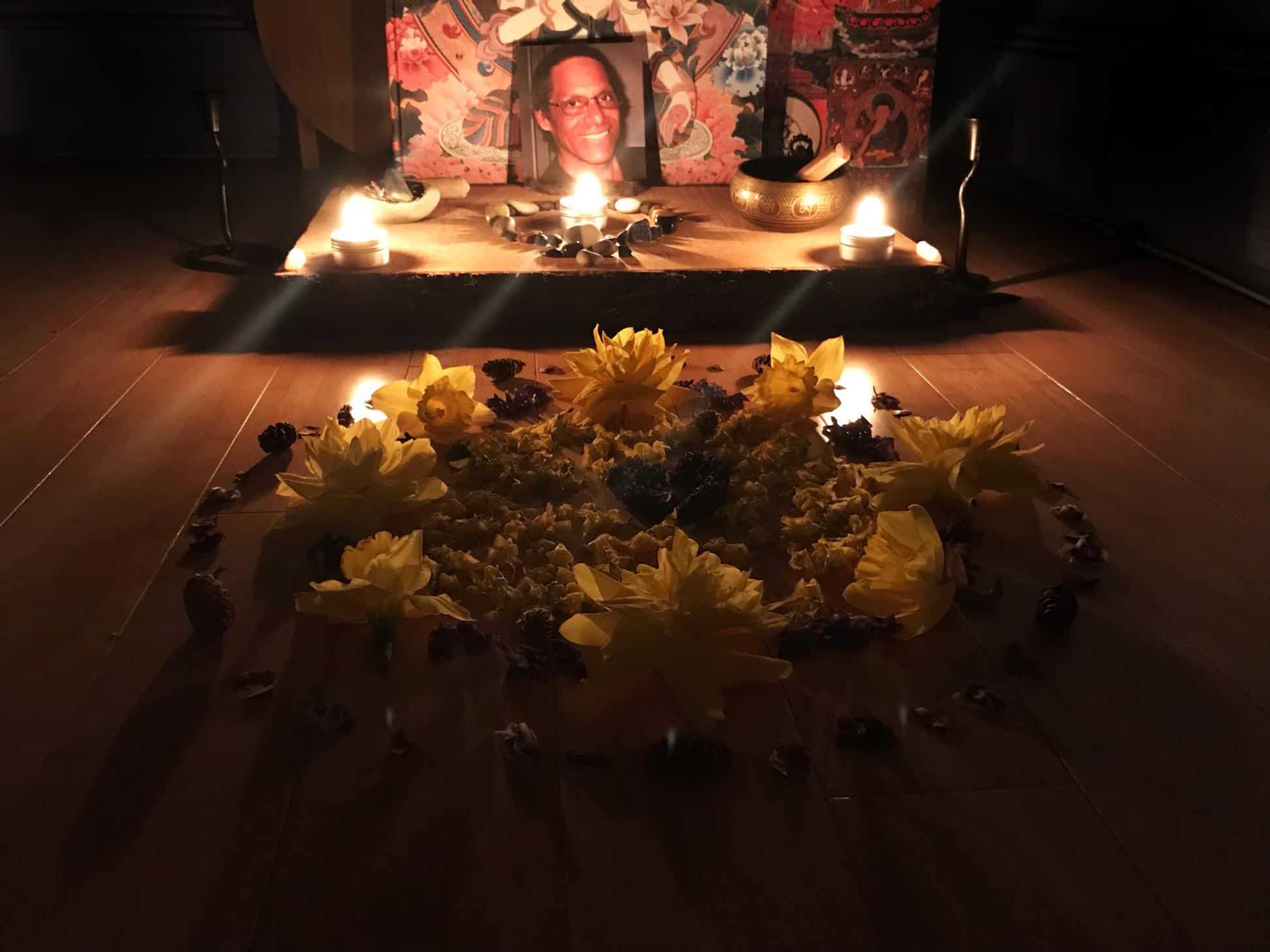By Nora Biette-Timons
In November 2021, Viennia Lopes Booth went to visit her dad for the first time in a couple of months. When he opened the door, she was “shocked,” she shared during a death care conference in September. “I hadn’t seen him in two months, and he looked like a dead man walking.”
He told her that it was merely his sciatica flaring up and that it was “getting better,” but that was clearly not the case. After two days of Lopes Booth begging him to seek medical attention, he only relented when she gave him the option of calling an ambulance or family taking him to get care.
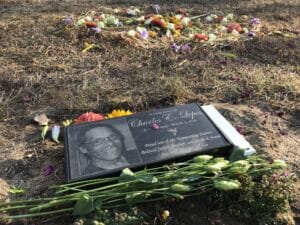 What followed is a story far too many people are familiar with. Lopes Booth’s father, Charles “Old Briar” Lopes, was Black and Wampanoag, had a “deep mistrust and fear of the medical institution,” she said. “With a lifetime of negative experiences, coupled with the long, ugly history of violence, disrespect, and utter disregard of Black and brown bodies, who could really blame him?”
What followed is a story far too many people are familiar with. Lopes Booth’s father, Charles “Old Briar” Lopes, was Black and Wampanoag, had a “deep mistrust and fear of the medical institution,” she said. “With a lifetime of negative experiences, coupled with the long, ugly history of violence, disrespect, and utter disregard of Black and brown bodies, who could really blame him?”
Doctors confirmed her worst fears: end-stage prostate cancer. There were no remaining treatment options, and he was given two to 14 days to live. He ended up living 97 days and, thanks to Lopes Booth following through on his wishes, he spent them at home, with her as his caretaker.
“As he lay clinging to life,” she said, “he had an unusual request: He asked me to have a home wake.” Aside from his distrust of institutions, he “didn’t want to be alone in a strange building with strange people, living or non-living.” His own agency had always been important to him throughout his life, “and this was really no exception.”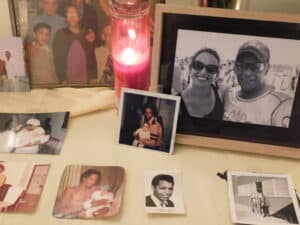
Lopes Booth—who trained as an herbalist specializing in women’s health—recounted her experience at the Building Bridges in the Deathcare Landscape conference in Seattle. Appearing on a panel addressing Diversity, Equity, and Inclusion (DEI) in death care, she and other experts discussed how the industry often ignores specific cultural practices and death rituals; and may exert pressure on loved ones to forgo traditional practices because they are considered unhygienic (or even just unusual); and can often have a predatory effect on people’s finances during one of the hardest moments of their lives.
She shared her particular story to detail the institutional hurdles she ran into while caring for her father at home in his final weeks and creating the at-home memorial he asked for, but also to make clear that though these are both deviations from the norm, they are possible—and can (even should) become more common.
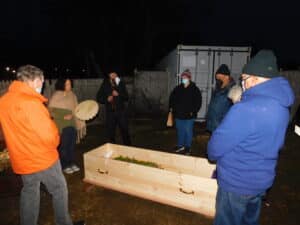 After he died, Lopes Booth’s family kept her dad’s body at home for a four-day vigil, celebrating his life. Throughout, they “kept a ceremonial fire going for the four days from his passing until we carried him away for cremation, and folks helped tend to the fire as a way to show love and honor my dad.” During the vigil, the door to his southeastern Massachusetts home was open: Friends, family, and even the hospice social worker visited whenever they wanted, some multiple times.” “We sang to him; read to him; played his favorite card game, Spades, in his room with him; played music for him; spent time in silence with him; shared food in honor of him. He was never alone,” she said.
After he died, Lopes Booth’s family kept her dad’s body at home for a four-day vigil, celebrating his life. Throughout, they “kept a ceremonial fire going for the four days from his passing until we carried him away for cremation, and folks helped tend to the fire as a way to show love and honor my dad.” During the vigil, the door to his southeastern Massachusetts home was open: Friends, family, and even the hospice social worker visited whenever they wanted, some multiple times.” “We sang to him; read to him; played his favorite card game, Spades, in his room with him; played music for him; spent time in silence with him; shared food in honor of him. He was never alone,” she said.
“We honored him, his body, and his life and helped his spirit fully leave his body in a gentle way surrounded by family and friends in the home he loved,” she said. “He would be happy with his sendoff.”
When it came time to bury his remains, they honored him with “ritual and love in a sunrise ceremony,” laying “his shrouded body on the land he held a deep connection with near his beloved garden.” On the way to cremate him, Lopes Booth played a song in their native language that translates to, “Creator, help us. Help us to grieve, help us to heal, strengthen us.” A few days later, they held a small family funeral where they “laid him to rest in power on tribal land next to his brother and father,” marking his grave with a stone they found on his favorite beach.
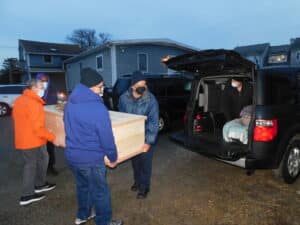 “Our elders say that ceremonies are the way we remember to remember,” Lopes Booth said, quoting Braiding Sweetgrass author Robin Wall Kimmer, who is a member of the Potawatomi Nation. “Ceremony is a vehicle for belonging to a family, to a people, and to the land. Through this initiation, this last request, I was able to experience the power of ceremonial remembering at every turn. I felt the whisperings of my ancestors guiding this process.
“Our elders say that ceremonies are the way we remember to remember,” Lopes Booth said, quoting Braiding Sweetgrass author Robin Wall Kimmer, who is a member of the Potawatomi Nation. “Ceremony is a vehicle for belonging to a family, to a people, and to the land. Through this initiation, this last request, I was able to experience the power of ceremonial remembering at every turn. I felt the whisperings of my ancestors guiding this process.
“Having the space and time to be with us in this very intimate way helped me to feel deeply connected to another way, my ancestral way…reconnecting in this liminal space to all that has been taken from our family and my people,” she continued. “My kin were beaten, shamed, killed [and] conventional death care feels like another form of forced assimilation.”
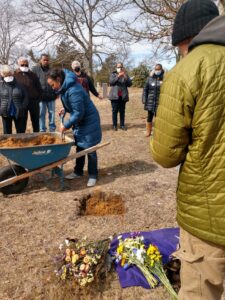 Demonstrating that a different way was possible had profound effects on her family. After her father’s funeral, Lopes Booth said her in-laws “completely changed their death plan,” and her “cousin, who’s a tribal medicine man, asked me how he could do this for himself.”
Demonstrating that a different way was possible had profound effects on her family. After her father’s funeral, Lopes Booth said her in-laws “completely changed their death plan,” and her “cousin, who’s a tribal medicine man, asked me how he could do this for himself.”
She recalled seeing her nephews attending her dad’s services and realized how valuable it would be to have your first experience in a death situation be so respectful and culturally specific, while also normalizing a different method of post-death care.
“To know that that option exists is really important,” she said. She later elaborated: “When the gates were open, my family and our community were able to honor my dad in a way that was true to him, and that was true to us…that was a powerful experience.”
Lopes Booth describes the experience of “caring for my dad at the end of his life and after death” as “one of my greatest life achievements. In some ways, I think this was my dad’s last gift for me, to allow me to wrap him in some much love and to have this space to understand the fullness of his being.”
But getting to this beautiful, rewarding point “felt like I had climbed Mount Everest. But the thing is, I didn’t need to feel like I climbed Mount Everest.”
She detailed the “serious gatekeeping” she encountered “along every part of this journey.” What was hardest about the process was the “resistance from the people necessary to get them on board. The knee-jerk reaction from people was like, what? No, no, no.” (The easiest part? Taking care of her dad’s body, Lopes Booth said. “We used techni ice,” and it “worked beautifully over the four days.”)
“The town clerk was the first person I had to visit to figure out how to go about doing this. And it took me several visits to her”—plus mentioning her father’s status as a Vietnam veteran—before “she finally [softened] to the idea of being willing to help me,” Lopes Booth said.
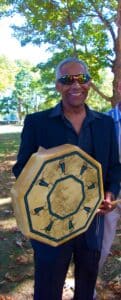 “Funeral directors…resorted to scare tactics. One said this could turn into a really bad science experiment, and another said, I can’t really sell you a cremation container because what happens if your dad’s body rolls out of it”—which added “a little flare to the scare,” she said, a bit tongue-in-cheek. She had to prove to various professionals repeatedly that she was acting on her dad’s behalf—and could plan this unconventional death way so safely and responsibly. “Overwhelmingly, the consistent message was, this is not how we do things, and what you’re trying to do is literally impossible.”
“Funeral directors…resorted to scare tactics. One said this could turn into a really bad science experiment, and another said, I can’t really sell you a cremation container because what happens if your dad’s body rolls out of it”—which added “a little flare to the scare,” she said, a bit tongue-in-cheek. She had to prove to various professionals repeatedly that she was acting on her dad’s behalf—and could plan this unconventional death way so safely and responsibly. “Overwhelmingly, the consistent message was, this is not how we do things, and what you’re trying to do is literally impossible.”
“My father and our people have suffered extraordinary levels of institutional oppression. He wanted to be free of institutions in death. He wanted agency. He wanted family. And ritual is an art of remembering, to remember, and my journey with my dad and this family-led post-death care really awakened a ceremonial reconnection to my ancestors.”
Lopes Booth called on “folks in the death care industry to consider the ways in which” contemporary institutional gatekeeping operates akin to historic oppression, and “to realize that we are forcing people into death ways that lack personalized meaning and are driven by power, consumerism, and the status quo.”
She ended her speech with a hopeful challenge to conference attendees: “How can we be more conscious of that gatekeeper mentality, and how can we stop perpetuating it, to invite access, empowerment, and agency and to really build bridges to our people, to our land, and to our cultures?”
